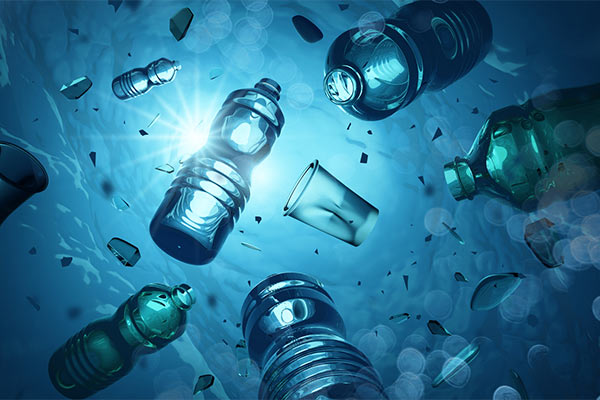It’s in the food you eat, the water you drink, and the clothes you wear.
It’s likely in the chair you’re sitting on, the phone in your pocket, and the glasses on your face.i
One study found that over 90% of Americans now have measurable amounts of it in their urine.ii
It’s a group of chemicals called phthalates. They are used to make plastics more flexible.
They are so widely used that they are almost impossible to stay away from. They’re in so many products and have so thoroughly polluted the environment that they’ve been dubbed “Everywhere Chemicals.”
But that’s not even the scariest thing about them. What’s really disturbing is what phthalates are doing to us.
5 Ways Phthalates Wreck Your Health
Phthalates are endocrine disruptors. That means they affect your hormones. This can lead to serious health problems:
- Birth defects. Studies have found that women with higher levels of phthalates are at greater risk of having a baby with birth defects.
- Erectile dysfunction. A study published in the American Journal of Men’s Health found higher levels of phthalates increase the risk of erectile dysfunction.
- Metabolic syndrome. In a study of over 2,700 people, elevated concentrations of phthalates were linked to metabolic syndrome. This condition puts people at risk for heart attack, stroke, and diabetes.
- Hot flashes. In menopausal women, high levels of phthalates were found to increase hot flashes.iii
- Preterm births. Exposure to phthalates has also been linked to preterm births and fertility problems in women.iv
There is also evidence linking phthalates to breast cancer, obesity, neurological problems, and asthma.v
Restaurants Are a Major Source of Phthalates
A study uncovered what a surprising source of phthalates for many people: eating at restaurants.
George Washington University researchers studied 10 years of data on the dining habits of over 10,000 people. They zeroed in on what food the subjects had eaten in the last 24 hours. They also collected urine samples to test for phthalates.
The researchers found that people who had eaten at restaurants, cafeterias or fast food outlets the previous day had far higher levels of phthalates. Their readings were 35% higher on average than those who had eaten home-cooked food.
It was worse for children. Kids who ate a restaurant or school cafeteria had 55% more phthalates.
When the researchers drilled down to particular types of food, they found that hamburgers, cheeseburgers, and other meat sandwiches elevated phthalate levels the most…but only if consumed at a restaurant or cafeteria, not at home.vi
“The association between phthalate exposure and dining out existed in all age groups, but the magnitude of the association was highest for teenagers,” said Ami Zota. She is an assistant professor of environmental and occupational health at George Washington University. She led the study.vii
Why are restaurant foods higher in phthalates?
It’s because they come in contact with more plastic, Professor Zota said.
Restaurant foods are often handled with workers wearing plastic gloves, they are prepared with plastic utensils, and they are often stored in plastic wrap before serving. Fast food wrappers that contain phthalates leach some of the chemical into the food.
Meats, cheeses, and other high-fat foods are most vulnerable. That’s because fat absorbs phthalates, Professor Zota said.
5 Ways to Avoid Phthalates at Restaurants
Here’s how you can minimize your exposure to phthalates while dining out:
- Don’t keep food in wrappers for long periods. Never reheat foods in plastic wrapping.
- Avoid drinking from plastic cups. If you are served a beverage in a plastic cup, ask if you can get a real glass.
- Order organic produce, meats, and dairy. Phthalates are used in pesticides. And they are in sewage sludge used as fertilizer on conventional farms. Organic foods have not been exposed to pesticides and other chemicals.viii
- Avoid plastic plates and utensils. And never put food directly on a cafeteria tray.
- Dump fast food. It is loaded with phthalates…both the food and the packaging.
Protect Yourself from Phthalates at Home
Restaurants aren’t the only place where phthalates are a danger. You should also try to lower your exposure at home by:
Keeping it cool. Never use plastic containers to heat food in the microwave. And never put plastic wrapped foods in the microwave.
Avoiding plastic-packaged foods and drinks. The packaging leaches phthalates into the product.ix
Storing it right. Don’t store foods in plastic or plastic wrap for long periods. Use glass containers or foil instead.
Buying organic. As explained above, organic foods are lower in phthalates.
One more thing…
Get a water filter. Studies have shown that phthalates have contaminated our water systems. They can be removed from tap water with filtration systems.
Even a basic water filtration device—a water pitcher or twist-on filter for your faucet—will get rid of them. Also, don’t drink bottled water or use plastic water bottles. Switch to stainless water containers.x
Editor’s Note: Discover natural, non-drug methods to transform your health. Read our monthly journal, Independent Healing. It’s your best source for unbiased, evidence-based medical information. Get all the details HERE.
Related Articles
Beware of Toxic ‘Quats’ in Personal Care Products
Lead in Your Glassware: What You Need to Know
Some Sanitizers Are Contaminated with Powerful Carcinogen, Test Shows

